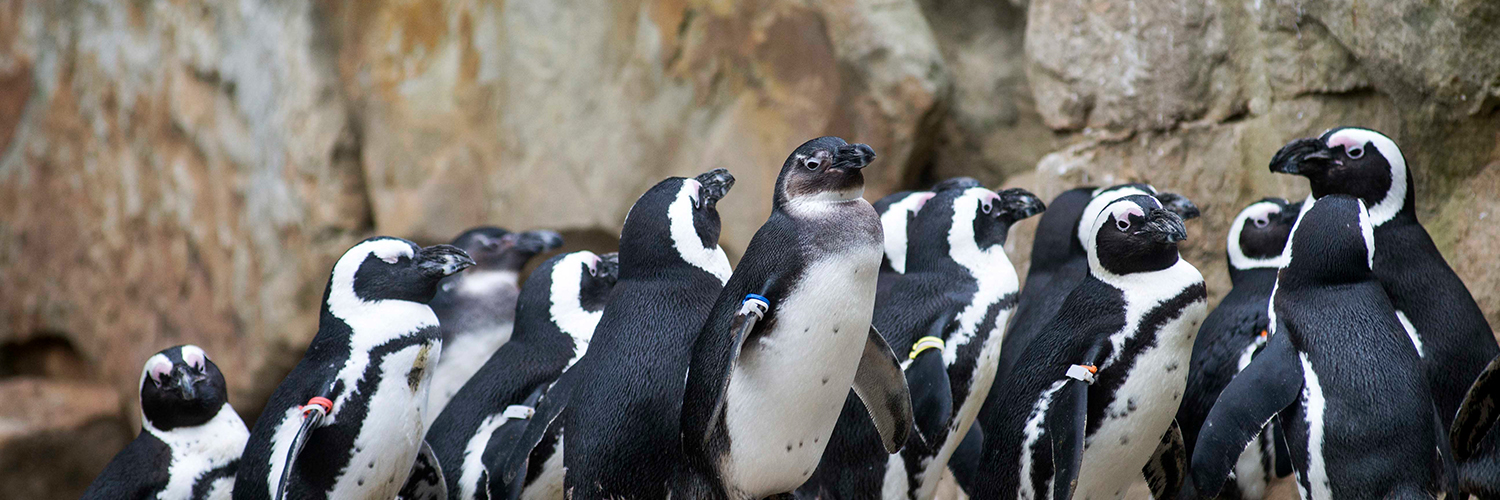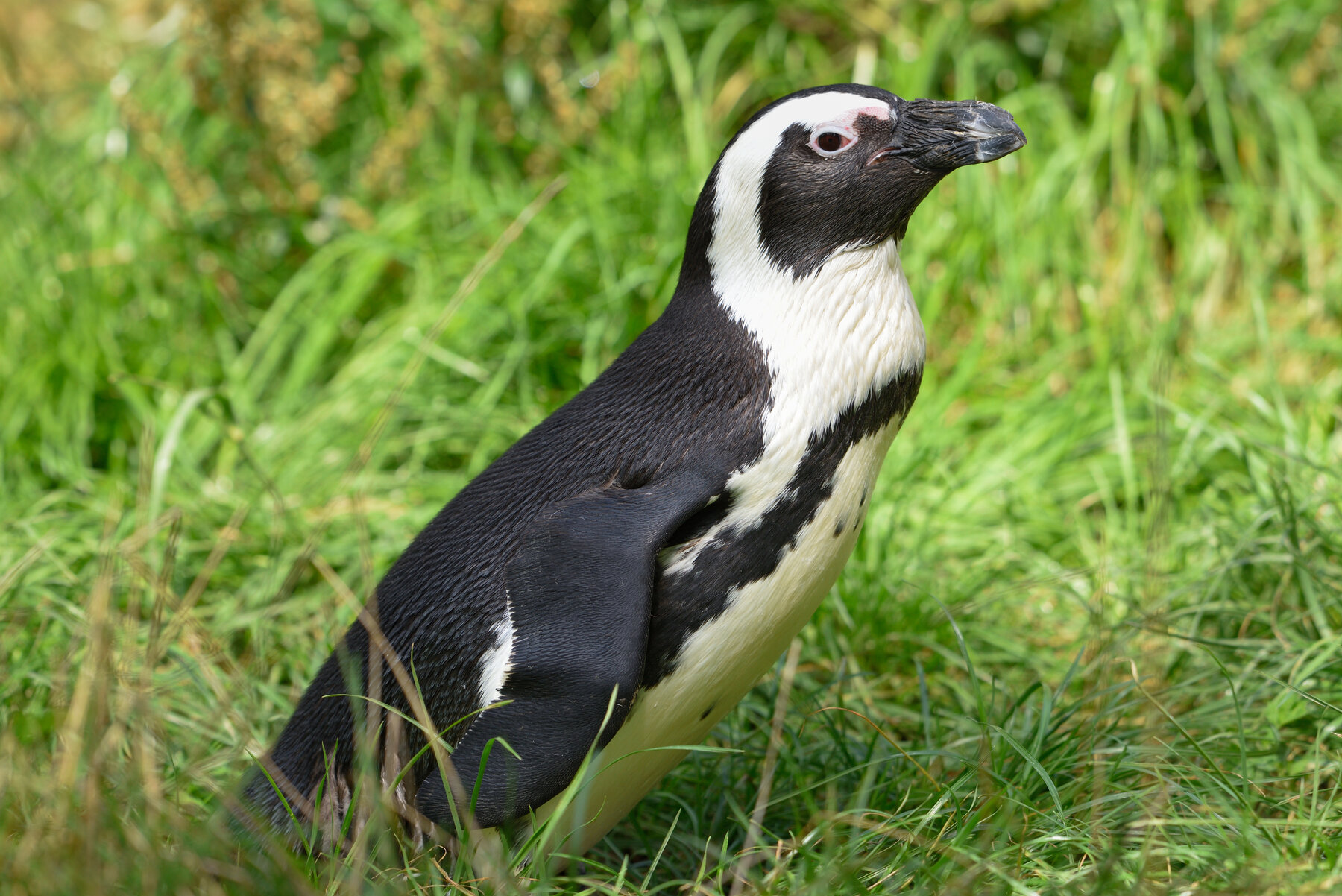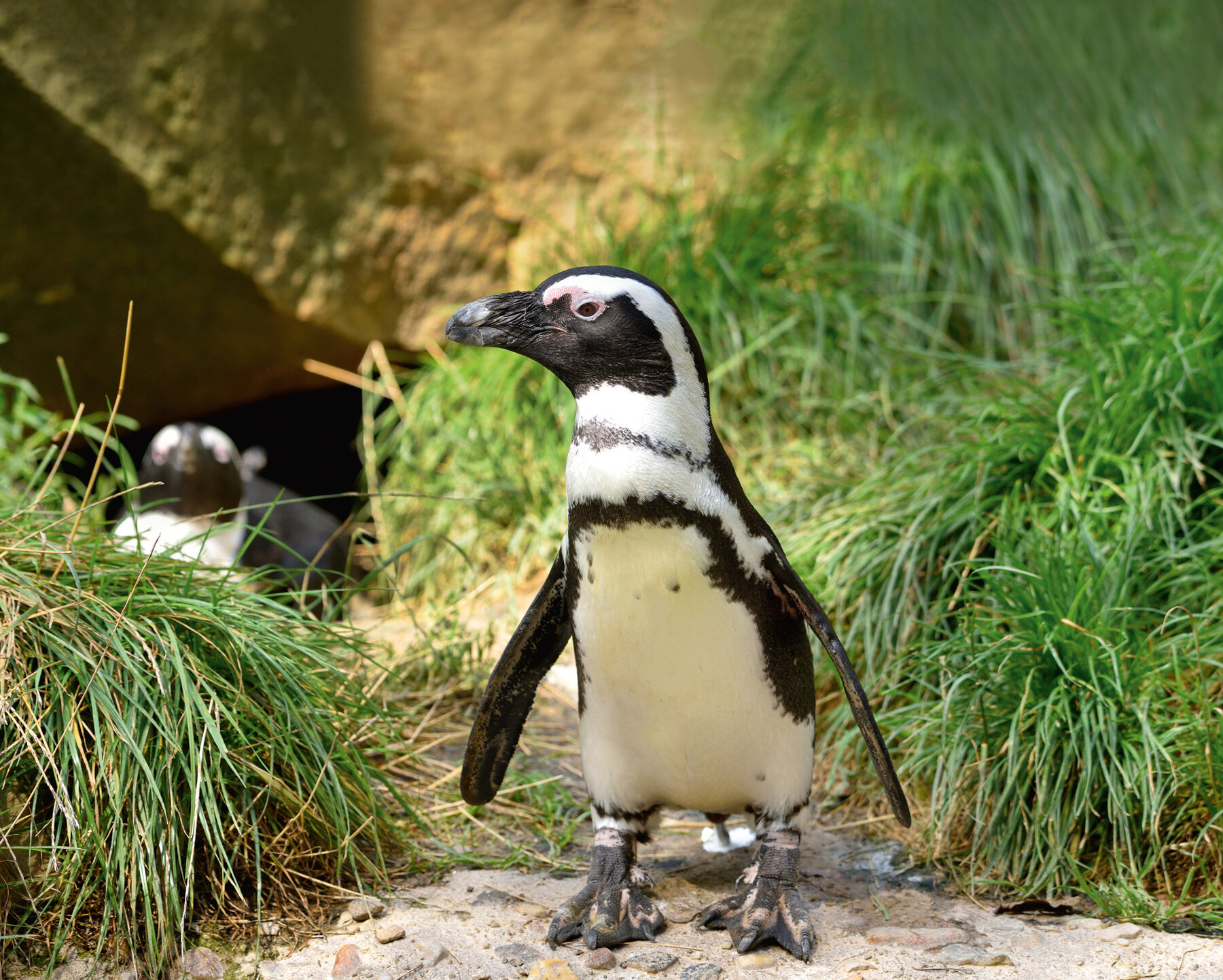
African Penguin
Spheniscus demersus
African penguins are the only penguin species native to South Africa. They used to be called ‘jackass penguins’ due to their donkey-like bray. But in order to distinguish them from the existing species of jackass penguins native to the polar regions, the birds with the pink patches around their eyes were renamed African penguins.
Sporty high flyers
African penguins are not able to use their wings for lift, but are better swimmers because of it – they move so fast through the water in doing so that it seems they are capable of 'flying' underwater. They owe their nimble capabilities as swimmers to their fin-like wings, which they move quickly using their strong pectoral muscles. They simply use their tale and feet for control.
Charakteristics
- Origin
Africa
- Habitat
coasts and islands; occasionally in Angola and Mozambique
- Diet
swarm fish such as sardines, but they also enjoy octopus and crab
- Status
around 150,000 (rough estimate, as no exact counts are available)
- Size
65 cm
- Weight
3 kg
- Breeding period
38 days
- Achievable age
up to 15 years in the wild, up to 27 years in human care
Threat Categories of IUCN


The 'dress coat': both a thermal suit and ...
The black and white feather coat of penguins is hugely practical! They lubricate their 'dress coat' using self-produced oil, which makes it all the more water-resistant. While the bottom layer of their feather coat, which consists of thick down feathers, is used as thermal underwear, the intermediate layer of air between the feathers insulates the penguins from the cold and provides underwater buoyancy.
... as well as camouflage protection
The colour of the feather coat also protects the African penguin underwater. The white belly and black back are ideal for camouflaging against hungry predators – depending on whether they become 'invisible' in the background of the bright water surface or the dark seabed.
Sociable and loyal family type
Penguins love company. They breed in colonies and go on the lookout for food together. There is an essential reason behind this, and namely that they are better protected against enemies while in groups. If a birth is on the horizon, the African penguins dig 30–90 cm deep burrows in the ground in which females are able to lay approx. two eggs and which protects them against the heat of the sun. Both partners, which incidentally often remain together for a lifetime, brood alternately in approx. six week sessions.
Did you know that ...
...African penguins are one of the smallest penguin species at just 70 cm and weighing about 3kg,
...they can incubate 2 to 3 eggs for over a month at a time
...and they stabilize their nests with their own excrement, the so-called guano?


